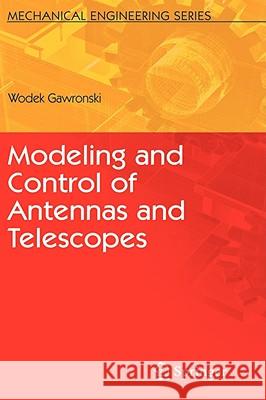Modeling and Control of Antennas and Telescopes » książka
Modeling and Control of Antennas and Telescopes
ISBN-13: 9780387787923 / Angielski / Twarda / 2008 / 228 str.
Mechanical engineering, and engineering discipline born of the needs of the industrial revolution, is once again asked to do its substantial share in the call for industrial renewal. The general call is urgent as we face profound issues of productivity and competitiveness that require engineering solutions, among others. The Mechanical Engineering Series is a series featuring graduate texts and research monographs intended to address the need for information in contemporary areas of mechanical engineering. The series is conceived as a comprehensive one that covers a broad range of c- centrations important to mechanical engineering graduate education and research. We are fortunate to have a distinguished roster of series editors, each an expert in one of the areas of concentration. The names of the series editors are listed on page vi of this volume. The areas of concentration are applied mechanics, biomechanics, computational mechanics, dynamic systems and control, energetics, mechanics of materials, processing, thermal science, and tribology. Preface This book is based on my experience with the control systems of antennas and radiotelescopes. Overwhelmingly, it is based on experience with the NASA Deep Space Network (DSN) antennas. It includes modeling the antennas, developing control algorithms, eld testing, system identi cation, performance evaluation, and 1 troubleshooting. My previous book emphasized the theoretical aspects of antenna control engineering, while this one describes the application part of the antenna control engineering.











